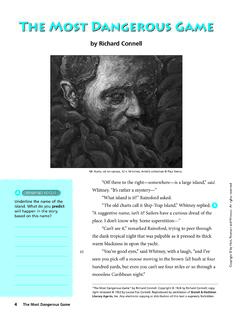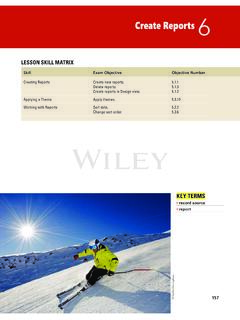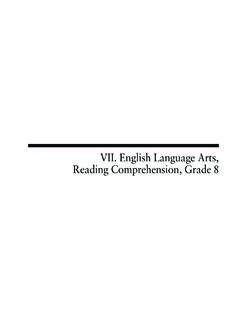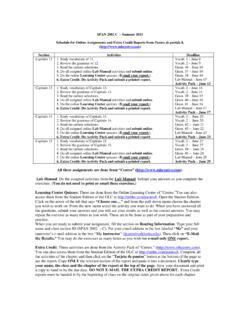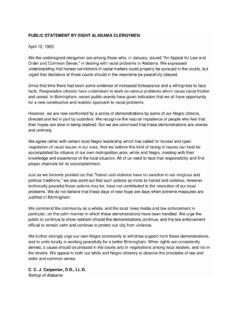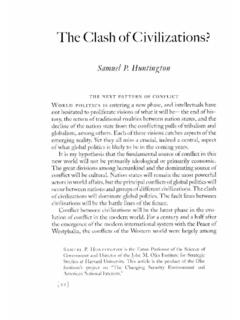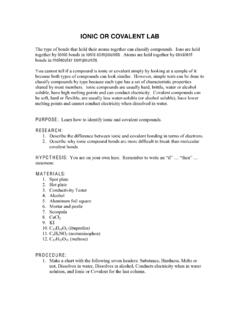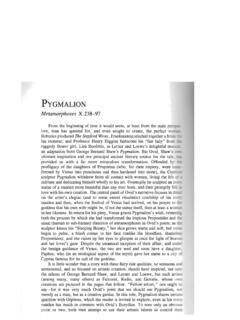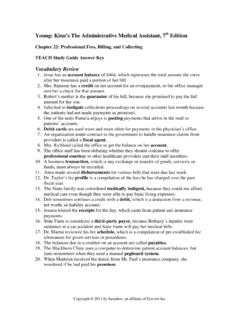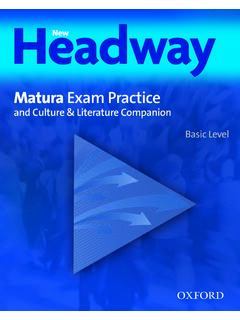Transcription of Fahrenheit 451 Discussion Questions and Study Guide Part ...
1 Fahrenheit 451 Discussion Questions and Study Guide Answer briefly the following Questions : Part One The Hearth and the Salamander 1. The novel, Fahrenheit 451 begins : It was a pleasure to burn. Why does Ray Bradbury start the novel in this way? Why might it be more pleasurable to burn books rather than read them? 2. In the opening scene, why are the books compared to birds. 3. Read Handout Number One, The Fifties. Read to page 31. Discuss the difference between Montag and Clarisse s lives. 4. Montag s television includes headphones called seashells. The wall to wall circuit allows Mildred to enter the play and, therefore, the television programming. How does the technology within the novel compare to our current technology? In the first pages of the novel, does technology improve the quality of life for Montag and his wife, Mildred?
2 Why or why not? 5. Complete Part One (pp. 32 68) consider why the narrator introduces us to Montag at this time of his life, when he encounters Clarisse and confronts Mildred s overdose. 6. Why does the author introduce the character of Clarisse before Mildred? 7. Why are all the houses fireproff in this society? 8. Why does Mildred require emergency service? What service is provided? 9. What is the mechanical hound and what is its purpose? 10. Why does the society consider Clarisse anti-social ? 11. When the woman s house is raided, why does she light the match? 12. Describe the relationship between Montag and Mildred? 13. What is the purpose of Beatty s visit? 14. Reread Captain Beatty s monologue ( ). Discuss his view that school cultivates anti-intellectual sentiment ( ). In your opinion does it accurately depict your high school?
3 Do books violate the idea that everyone *is+ made equal ( )? 15. Why does Montag feel fat ? Arts and Culture Fahrenheit 451 was published in 1953, the year the Korean War ended. The memory of Hitler s atrocities and World War II was less than a decade old. The Cold War, meanwhile, had hardened into a standoff. In 1952 the tested a hydrogen bomb, and the followed suit a year later. Only three years later, Frenchman Jean-Paul Sartre s philosophy of existentialism, Being and Nothingness, is published in an English translation. In jazz, the swing era gave way to bebop, bringing new musical expression to the post-war era. In New York, saxophonist Charlie Parker and trumpeter Dizzy Gillespie inspired audiences with their dynamic virtuosity. A year after the publication of Fahrenheit 451, the Voice of America began broadcasting jazz worldwide.
4 In 1956, the State Department sent Duke Ellington, Dizzy Gillespie, and Louis Armstrong on tour in the hope that their performances would spread American democracy and alleviate the tensions of the Cold War. Go to NEA s jazz in the Schools Web site at Go to Lesson Three and play clips of Charlie Parker, Dizzy Gillepsie, Miles Davis, and Dave Brubeck. Take notes as you listen. Identify the different patterns in the music. Narrative and Point of View First-person narration wraps the reader into the perspective of the main character, as this person tells us, first-hand, about her or his experiences. This voice uses the first-person I to recount her or his adventures and is almost always personally invested in how the drama unfolds. Bradbury employs a third-person narrator in Fahrenheit 451. Third-person narration uses he or she to tell the story and establishes a greater distance between narrator and audience, as an outside observer relates events.
5 Third-person narration may or may not be omniscient. An omniscient third-person narrator knows the thoughts and movements of every character. Fahrenheit 451 is not strictly omniscient; we know only Montag s movements and thoughts. The narration follows Montag like a camera, and the reader is never allowed into the lives of other characters, except for what they say to him. This inevitably increases our sympathy for Montag. How might Fahrenheit 451 be narrated in the first-person from the point of view of a government official that believes burning books protects society? Brainstorm the outline of a new version of this story told from this perspective. Writing Portfolio Write a letter to Captain Beatty responding to his ideas about education and his charge that a book is a loaded gun ( ). do you agree or disagree with his ideas?
6 In your letter, explain your ideas about education and the value of books. Type your letter and submit to Print out your receipt. Turn it both the receipt for submission and the original printed letter. Remember to use: Times New Roman, Size 12, Double Spaced Part Two The Sieve and the Sand 1. In the scene where Mildred and Montag read books together, what are their separate reactions? 2. What is the effect throughout sections I and II, of the bombers flying over? 3. Who is Professor Faber? 4. Montag s reaction to the commercial on the subway is a turning point in his life. How does he react and why? 5. What argument does Faber make for books? 6. What is the small green metal object ? 7. What does the White Clown show lead you to believe about television programming in this society? 8. Why does Mrs. Phelps cry when Montag reads Dover Beach ?
7 9. What is Montag s destination at the end of section II? Why? Characters The main character in a piece of literature is called the protagonist. The protagonist often overcomes a weakness to achieve a new understanding by the work s end. A protagonist who acts with courage and strength may be called a hero. The protagonist s journey is made more dramatic by challenges from characters with different beliefs or perspectives. A foil provokes or challenges the protagonist. The most important foil, the antagonist, opposes the protagonist, barring or complicating his or her success. Captain Beatty, the fire chief, is a key foil and a historian of sorts. While Montag once followed Beatty s values, he now resists Beatty s commitment to burning books. Meanwhile, Faber represents a musty, academic link to the past. Clarisse McClellan, a teenager, longs for the romantic days of front porches and rocking chairs, complaining, we never ask Questions .
8 Mildred, the model citizen, attempts suicide while living in a world enchanted by television. The characters of Mildred, Clarisse, Faber, or Beatty bring out dramatic responses from Montag. Choose one character and discuss how that character leads Montag toward self-realization. How does Montag s relationship to the chosen character change? Present your conclusion, using specific textual support. Writing Portfolio Who do you believe to be the antagonist? Why is this character opposed to Montag? How does this character force Montag to reevaluate himself? Use passages from the text to support your conclusions. Type your 5 paragraphs (two page response) and submit to Print out your receipt. Turn it both the receipt for submission and the original printed two paged answer. Remember to use: Times New Roman, Size 12, Double Spaced Write one page explaining why Ray Bradbury chose his section titles.
9 Choose one title either, The Hearth and the Salamander or The Sieve and the Sand, . Explain what the title means and how this deepens your interpretation of the section. Type your one page response and submit to Print out your receipt. Turn it both the receipt for submission and the original printed one paged answer. Remember to use: Times New Roman, Size 12, Double Spaced Part Three Burning Bright 1. This section is very revealing of Beatty s character. What is revealed? 2. What major event coincides with Montag s escape? How are the two related? 3. How does Montag foil the hound ? 4. Read Handout Number Two, Science Fiction . Note the descriptions of the Mechanical Hound. How is the Mechanical Hound a symbol of something else? What other images in the reading could be symbols?
10 5. Reread the detailed description of the hound ( ) and the battle ( ). Why might Montag s expression of affection to the hound , mark a turning point in his development? What role does affection play in this world? What might be the significance of Montag s final battle with the hound ? Finally, how might the Mechanical Hound be a symbol for Montag s world? 6. What is the purpose of the long description of the river, the woods, and the sky? 7. What purpose do the inhabitants of this wilderness have for life? 8. Why does the book end as it does? Figurative Language Writers commonly use stylistic devices. Such tools allow readers to visualize events, whether through an unexpected image, an idea, or an observation. Some common examples of figurative language include image, simile, and metaphor.
